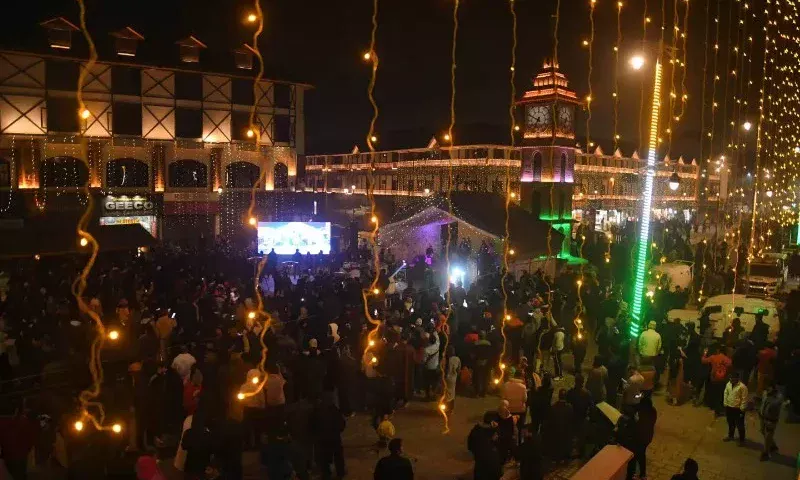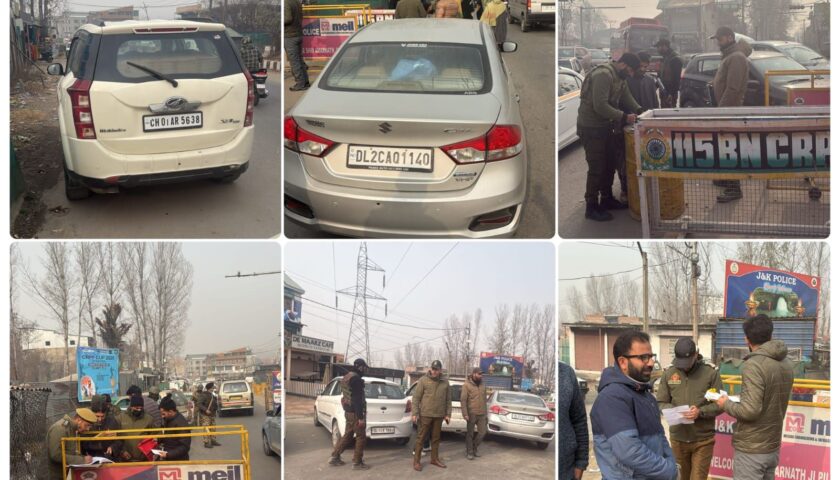Shocking Knife Attack Near Zero Bridge: A Wake-Up Call for Kashmir
By: Javid Amin
Srinagar 04 June 2025: On a quiet evening near Zero Bridge, Rajbagh in Srinagar, an 18-year-old youth, Imran Bilal Shah, became the latest victim of a gruesome knife attack. Reportedly attacked with a sharp-edged weapon, Imran was quickly rushed to the hospital where he is now in stable condition. While the immediate danger has passed, this incident has stirred widespread concern across Kashmir.
This violent episode is not an isolated case. Rather, it reflects a deeper, disturbing trend—a rise in youth-led violence and street crimes across the region. As the police investigate and locals grapple with growing anxiety, many are asking the same questions: Why are these attacks happening? What’s the backdrop? And how can they be stopped?
Anatomy of Violence: Why Are Such Attacks on the Rise?
01. Street Crimes on the Surge
Street violence in Srinagar has been steadily climbing. Incidents involving sharp weapons, assaults, and even firearms have become more frequent. The motives vary—ranging from personal disputes and romantic rivalries to retaliations among local gangs.
Teenagers and young adults are increasingly involved, turning everyday locations like parks, markets, and bridges into crime scenes. Law enforcement reports suggest many such acts are unplanned, arising from momentary rage or peer provocation.
02. Economic & Social Pressure Cooker
Behind many of these acts is a growing socio-economic crisis. Kashmir’s youth face high unemployment rates, limited job opportunities, and a lack of recreational outlets. According to recent data, J&K’s unemployment rate stands at 17.1%, among the highest in India.
With idle minds and mounting frustration, young people are more susceptible to violence, drug abuse, and anti-social activities. For many, crime becomes a misguided outlet for anger and financial desperation.
03. Cracks in Law Enforcement
While the J&K police have launched multiple crackdowns, many incidents expose a gap in local policing. Poor surveillance in some areas, coupled with limited human resources, leaves plenty of room for violent crime to go unchecked.
There’s also a pressing need for modernizing investigative techniques and community policing efforts. CCTV coverage remains sparse, especially in residential zones, making it difficult to deter or trace back criminal acts.
04. External Influences & Social Media
Another layer complicating this issue is the role of external influences. While politically motivated violence has decreased, the ideological vacuum has been replaced by toxic social media content glorifying gang culture and street bravado.
Online platforms are filled with posts of teens flashing weapons, issuing threats, or showcasing criminal behavior. Peer validation through such content often motivates real-life emulation.
Kashmir’s Crime Wave: A Summary of Recent Disturbing Trends
Knife Attacks & Street Violence
The Zero Bridge attack on Imran Bilal Shah is just one of many. Similar knife attacks have occurred across Srinagar’s hotspots like Lal Chowk, Nowhatta, and Batmaloo. Local residents report a visible uptick in confrontations, especially during late evening hours.
Drug Addiction & Narcotic Crimes
Kashmir is battling a severe drug crisis. As per official figures, there are over 67,000 drug addicts in the Valley, 85% of whom consume heroin daily. This epidemic has directly contributed to a rise in theft, gang activity, and even murder.
Hospitals like the Government Medical College in Srinagar have reported a massive increase in drug-related admissions. Law enforcement agencies frequently conduct raids, yet the supply chain appears resilient.
Gang Wars & Organized Crime
Local gangs, once dormant, have resurfaced with a vengeance. Turf wars, extortion, and revenge crimes are increasingly common. Youngsters as young as 16 are now being recruited into these circles, lured by quick money and a false sense of power.
These groups operate under coded identities, often communicating through encrypted messaging apps. Many attacks are retaliatory, part of an escalating cycle of violence.
Domestic & Youth-Centric Violence
Apart from gang-related activity, there is a spike in domestic violence, including cases where minors are either victims or perpetrators. Disturbingly, many of these incidents are not reported due to societal stigma or lack of trust in authorities.
A Grim Statistical Overview
Let’s break down the current crime environment with official numbers:
- 24.6% increase in overall crime rate in 2021 compared to 2020
- 17.1% unemployment rate—directly affecting youth
- 85% of drug addicts are regular heroin users
- Hundreds of knife attacks and assaults logged in the past 12 months
These numbers aren’t just statistics—they represent broken families, injured lives, and a growing fear that the region is spiraling out of control.
Notable Incidents That Have Shaken the Region
The Zero Bridge Attack (June 2025)
Imran Bilal Shah, 18, stabbed with a sharp-edged weapon—currently stable.
Drug Raid in Downtown Srinagar (May 2025)
Over 30 youths arrested, massive haul of heroin and synthetic drugs seized.
Gang Shootout in Baramulla (March 2025)
Two rival gang members killed in a public gunfight.
Domestic Violence Case in Pulwama (February 2025)
16-year-old girl found dead under suspicious circumstances—allegations of prolonged abuse.
Root Causes: What’s Really Driving This Surge in Crime?
Political Instability
The long-standing conflict in Kashmir has weakened institutions and fractured society. Although insurgency has declined, its socio-political residue still lingers. Police and administrative structures often struggle to function effectively in a post-conflict society.
Economic Desperation
Kashmir’s economy—largely tourism-based—has suffered repeated setbacks due to political unrest, pandemics, and natural calamities. With few industries and limited private sector growth, the region’s youth are trapped in economic limbo.
Ineffective Law Enforcement
Police reforms have been slow. Many precincts are underfunded and poorly equipped. Public trust in law enforcement is low, and many crimes go unreported due to fear or perceived inaction.
Digital Radicalization
The internet is a double-edged sword. While it has brought global awareness, it has also exposed Kashmiri youth to harmful ideologies, gang glorification, and cyberbullying. Criminal influencers thrive in digital echo chambers.
Solutions & The Road Ahead
Strengthening Policing & Surveillance
- Install CCTV in vulnerable zones
- Increase night patrols and community policing
- Modernize crime-tracking systems
- Promote local police recruitment to bridge trust gaps
Youth Engagement & Skill Development
- Set up vocational centers across districts
- Offer financial incentives for startups
- Include mental health support in schools
- Introduce after-school programs to keep teens engaged
Drug Rehabilitation & Awareness
- Expand drug rehab facilities in district hospitals
- Launch awareness campaigns in colleges and madrassas
- Train teachers to detect early signs of addiction
Community-Led Safety Initiatives
- Form local watch groups with police coordination
- Conduct neighborhood safety audits
- Empower religious and community leaders to preach non-violence
Legislative & Administrative Reforms
- Fast-track criminal justice processes
- Implement stricter penalties for youth-related crime
- Improve victim support services
Final Thoughts: Time to Act
The attack on Imran near Zero Bridge is more than a tragic event—it’s a reflection of deeper societal distress. Kashmir, with its rich history and resilient spirit, cannot afford to let another generation fall prey to violence, drugs, and despair.
Restoring peace in Kashmir requires a holistic approach that combines law enforcement, socio-economic upliftment, and youth empowerment. Stakeholders—governments, communities, and families—must come together to reclaim the streets, bridges, and hearts of the Valley.
If we don’t act now, the next victim could be just around the corner.




